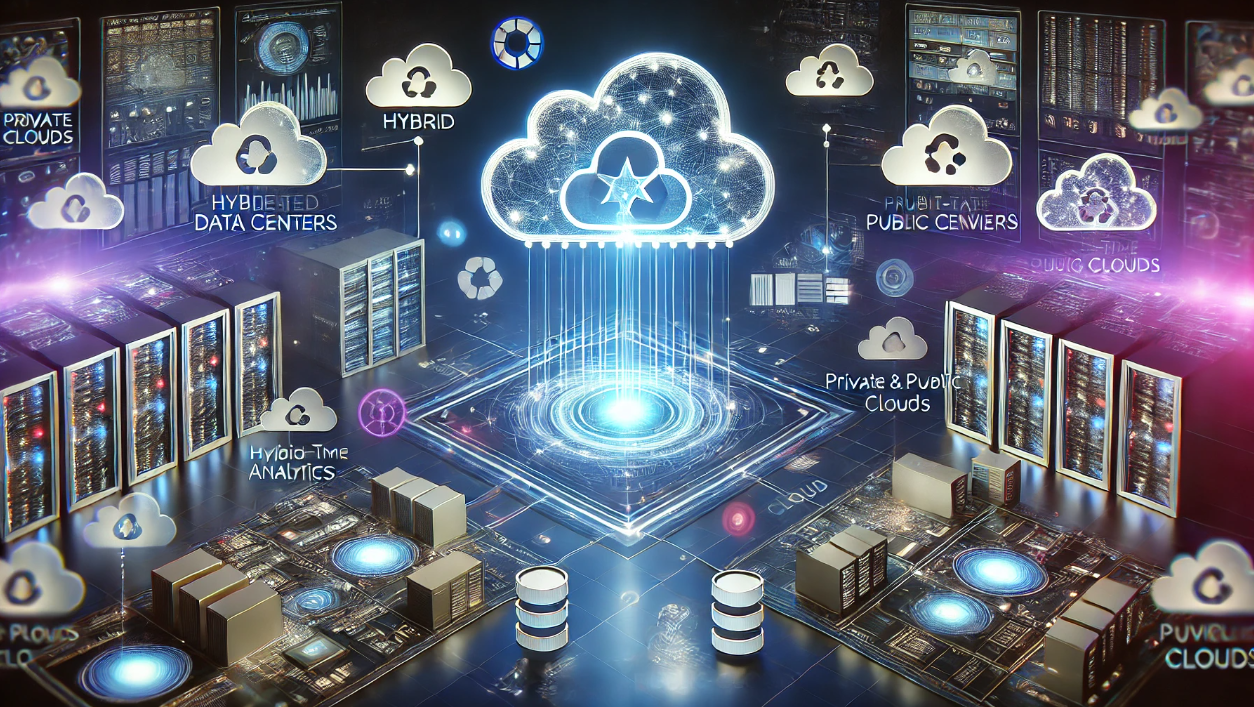☁️ Cloud Computing in 2025: Hybrid, Multi-Cloud, and Serverless Innovations
Introduction
Cloud computing is evolving rapidly, and by 2025, businesses will rely even more on hybrid, multi-cloud, and serverless solutions. These advancements will:
✅ Improve scalability – Businesses can adapt faster.
✅ Enhance security – AI-driven threat detection.
✅ Reduce infrastructure costs – Pay only for what you use.
So, what can we expect from cloud providers in 2025? Let’s explore the future of hybrid cloud, multi-cloud, and serverless computing.
1. Hybrid Cloud: The Best of Both Worlds
What is Hybrid Cloud?
A hybrid cloud combines on-premises data centers with public and private cloud services, allowing businesses to keep sensitive workloads on-prem while using the cloud for scalability.
✅ Benefits of Hybrid Cloud in 2025
✔️ Flexibility – Run workloads on public or private cloud as needed.
✔️ Compliance & Security – Keep sensitive data on-prem while leveraging cloud scalability.
✔️ Cost Optimization – Use AI-driven automation to allocate resources efficiently.
Innovations in Hybrid Cloud
Edge Computing Expansion – Compute workloads closer to the user to reduce latency.
AI-Powered Cloud Management – Automate workload distribution for better efficiency.
5G & IoT Integration – Faster data transfer between on-prem and cloud environments.
Example: Microsoft Azure’s Arc allows businesses to manage hybrid workloads across multiple clouds and on-prem environments seamlessly.
2. Multi-Cloud: Avoid Vendor Lock-In
What is Multi-Cloud?
Multi-cloud means using two or more cloud providers (AWS, Azure, Google Cloud) to avoid dependence on a single vendor.
✅ Benefits of Multi-Cloud in 2025
✔️ Resilience & Uptime – If one cloud fails, another keeps your app running.
✔️ Cost Savings – Optimize expenses by using the cheapest cloud provider for each workload.
✔️ Avoid Vendor Lock-In – No reliance on a single cloud provider.
Innovations in Multi-Cloud
Unified Cloud Management – Centralized dashboards to manage workloads across AWS, Azure, Google Cloud.
AI-Driven Cost Optimization – Cloud AI automatically moves workloads to the most cost-effective provider.
Interoperability Standards – New APIs make it easier for different cloud services to communicate.
Example: Kubernetes (K8s) has become the de facto standard for managing multi-cloud workloads, ensuring apps run consistently across cloud providers.
⚡ 3. Serverless Computing: The Future of Cloud Infrastructure
What is Serverless Computing?
Serverless computing allows developers to build applications without managing servers. Cloud providers handle all infrastructure scaling, patching, and security.
✅ Benefits of Serverless in 2025
✔️ Auto-Scaling – Applications scale instantly based on traffic.
✔️ Lower Costs – Pay only for actual compute time (no idle server costs).
✔️ Faster Development – Focus on code, not server management.
Innovations in Serverless Computing
Longer Execution Times – Serverless functions will handle longer running workloads.
AI-Driven Function Orchestration – Automate workflows across multiple cloud services.
Event-Driven Architecture – Seamless integration with IoT, AI, and microservices.
Example: AWS Lambda and Google Cloud Functions enable businesses to deploy code instantly, without managing infrastructure.
4. Security & Compliance in the Cloud
As cloud adoption grows, security remains a top priority. In 2025, cloud security will focus on:
✔️ Zero Trust Security – Authenticate every request, even inside the network.
✔️ AI-Driven Threat Detection – Predict and prevent cyber threats before they occur.
✔️ Post-Quantum Cryptography – Protect data from future quantum-based cyberattacks.
Example: Google Cloud uses Confidential Computing, ensuring encrypted data stays protected even while in use.
5. Cloud Trends to Watch in 2025
1. AI & Machine Learning in Cloud Services
✔️ AI-driven cost optimization – Cloud services will automate pricing adjustments to save money.
✔️ Auto-scaling AI models – Run machine learning models dynamically without manual configuration.
2. Sustainable & Green Cloud Computing
✔️ Cloud providers aim for 100% renewable energy-powered data centers.
✔️ Carbon-aware computing – Optimize workloads based on low-energy hours.
3. Edge Computing + Cloud
✔️ Process data closer to users instead of central cloud servers.
✔️ Lower latency for IoT, AR/VR, and real-time applications.
Final Thoughts: The Future of Cloud in 2025
What can businesses expect?
✔️ More control – Hybrid & multi-cloud strategies to balance costs & performance.
✔️ Less management – Serverless computing eliminates infrastructure headaches.
✔️ Smarter security – AI-driven monitoring automates threat detection.
✔️ Sustainable growth – Green cloud solutions reduce energy consumption.
✅ Next Steps?
Adopt multi-cloud strategies for cost savings & resilience.
Invest in serverless computing to reduce infrastructure management.
Prioritize AI-driven security to protect cloud workloads.
The cloud is evolving fast – will your business keep up?
Would you like a deep dive into AI-driven cloud automation or security trends? Let me know! ☁️

